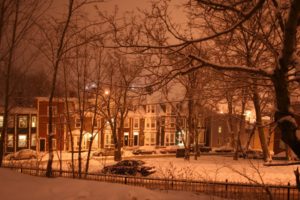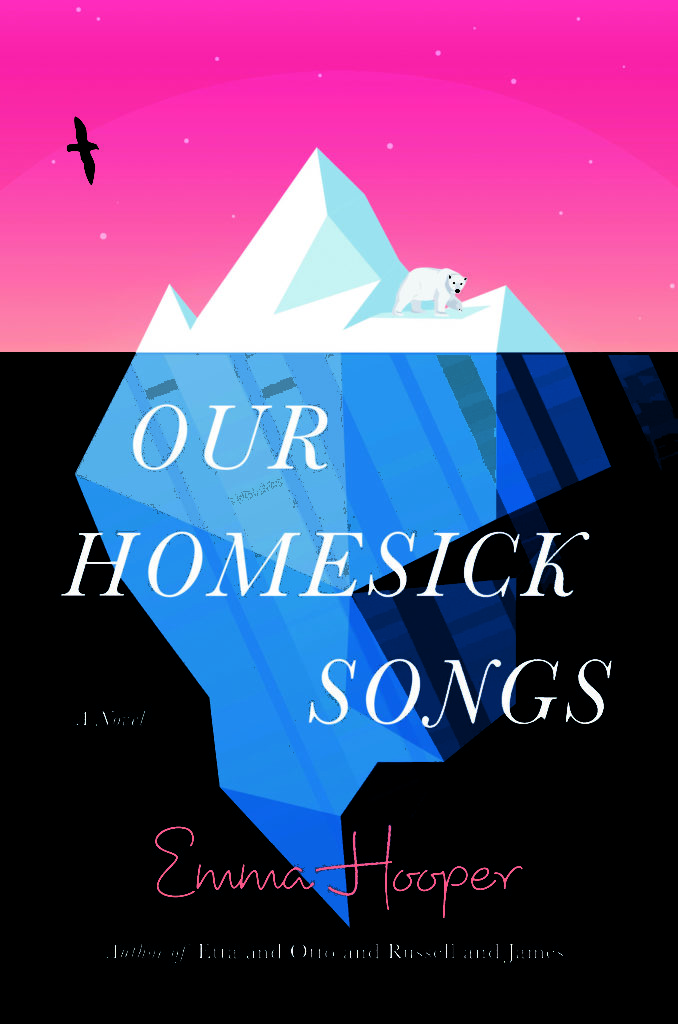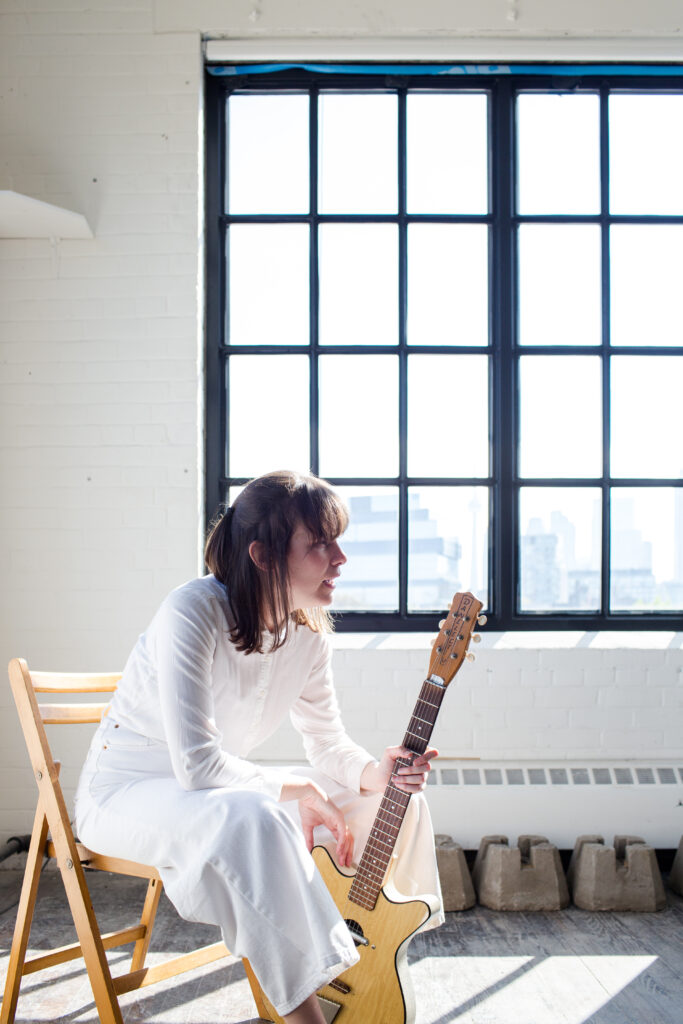Louise Moyes’ Long’s Hill: I Live(d) Here Reflects A Neighbourhood’s Strength and Beauty
BY Eva Crocker
September 2018
In 1992 Long’s Hill caught on fire and my family was evacuated from our house on Livingstone Street. I was two; I don’t remember the fire but there’s a story my mom tells about it that I love because it’s full of danger and drama and, admittedly, because I am at the center of it.
On the night of the fire my mom left the house with me in her arms. The sky was black with smoke and there were embers floating through the air. My dad’s sister showed up to offer my family a ride and a place to stay. On the sidewalk outside the house my mom and aunt got in an argument about the safest route to the car. They were both yelling at the other to run in the opposite direction. My aunt tried to haul me out of my mom’s arms but my mom wouldn’t let go. “It was biblical!” My mom says at this part of the story, “like the one about the baby who almost gets cut in half.”
During the tug-of-war a fat ember drifted down and burned my hand. I have a scar; it shrank as my hand grew and now it’s smaller than a dime and faded but you can still see it, if my hand is curled a particular way. That ember ended up in “Haloes,” a short story my mom wrote about the fire. This weekend, the scene with the ember will be read aloud in Louise Moyes’ Festival of New Dance piece, Long’s Hill: I Live(d) Here.
Long’s Hill: I Live(d) Here is a guided walk through the Long’s Hill neighbourhood, punctuated by pop-up performances that tell the stories of people who live and have lived in that place. In an email exchange, Moyes described the piece as a docudance (a hybrid of documentary and dance) because it is based on research about the area, including a series of interviews with people who have a connection to the neighbourhood.
The piece melds dance with photography, readings of poetry and fiction, a presentation of statistical data about visiting patterns in the neighbourhood in the 1970s, and music to retell some of what Moyes uncovered through her fact-finding. It’s important to her that the audience experiences these stories as they move through the community.
“It is through walking that we learn how a neighbourhood works. Walking is the best way to get to know a place – and become part of it yourself,” Moyes wrote.
Long’s Hill: I Lived Here is about capturing the reality of living on Long’s Hill today but it also looks at the neighbourhood through a historical lens. The walk was partly inspired by a talk historian Larry Dohey gave at The Rooms, where he described life on Long’s Hill in the 1800s. One of the details from the talk that stayed with Moyes was that the land surrounding The Kirk is the site of the first Catholic graveyard in St John’s – a cemetery that had to be relocated after a few decades because free roaming livestock kept digging up human remains.

Photo by Steve Crocker
Moyes also spoke to a pair of sisters who lived in the neighbourhood in the 1950s. The women told Moyes they remember when about ten times as many children lived on the hill and people spent their free time on their front steps, hanging out with their neighbours.
“People didn’t have cars and socialized close to home. Every corner of the neighbourhood was animated – even the short alley between Long’s Hill and Young Street behind is full of stories,” Moyes wrote, describing what she learned from them.
The piece also includes the voices of people who live and work in the neighbourhood now. She asked two of her neighbours to perform a duet on accordion and fiddle during the walk. She also partnered with the Safe Harbour Outreach Project (SHOP), an organization that advocates for the human rights of sex workers, and is planning to incorporate poetry written by sex workers who currently work in the area.
The bracketed ‘d’ in the title, Long’s Hill: I Live(d) Here, is a reference to how the neighbourhood’s past and present co-exist in the piece. By layering historical stories alongside more contemporary ones, the piece asks audiences to think about how the neighbourhood has changed over the years – a contentious question, and one that’s been the focus of a number of local news articles recently.
The media coverage suggests some residents believe the neighbourhood is becoming more dangerous. It also implies there is a link between a rise in local violence and a perceived increase in sex work in the area. However, Moyes notes that the sisters who lived on Long’s Hill in the 1950s told her sex workers have always been part of the neighbourhood: “We knew them by their first names! That’s the difference.”
Moyes believes it’s the opioid crisis that has had the most serious impact. A Long’s Hill resident herself, she recently began feeling unsafe walking home alone and started wondering if it might be time to move. Instead she’s decided it’s more important than ever to stay and to connect with the people who live and work near her.
“This project is a way for me of honouring this beautiful and historic neighbourhood, and all of its residents, but also reclaiming the neighbourhood for myself,” Moyes wrote. “With every interview I do and neighbour I talk to, every walk through and every piece of writing I find related to this area, I am deepening my roots here and reducing my fears.”
The walk will finish at The Kirk where there will be music and dancing and desserts. This will also provide an opportunity for neighbours and visitors to chat with each other the way they once did on their front steps.
“My little project cannot solve any issues,” Moyes wrote. “My main interest is in the neighbourhood revealing itself to others, and then maybe reflecting its strengths and beauty back to itself, through its geography and stories.”
As an adult I lived across the street from the house I grew up in on Livingstone Street, where my parents and little brother still live. I was elated to learn that Moyes has created such a vibrant, honest and celebratory piece about the place I grew up in. I feel honoured that the ember that caused my scar is going to be re-ignited in Tessier Park this weekend as a part of Long’s Hill: I Live(d) Here.
Long’s Hill: I Live(d) Here is presented as part of the Festival of New Dance. Walks take place Saturday, September 29 at 2:00 pm, Sunday, September 30 at 2:00 pm and Sunday, October 7 at 2:00 pm. See the Festival website for tickets and details.
While you’re here:
… we hope you enjoy our website! Our online audience is growing every month, and that means that more people like you are seeing and reading incredible new work by Newfoundland and Labrador writers and artists. We want the people of the province to have access to high quality, contemporary writing about the unique and ever-evolving culture of this place, so we’re offering our online content for free. That said, if you’re able to help us keep providing this opportunity to both readers and creators in Newfoundland and Labrador, we encourage you to subscribe to our print magazine. Subscription details are here. If you ‘d like to support us with a donation or legacy gift (tax receipts available,) please contact us at rcohoe@mun.ca.



